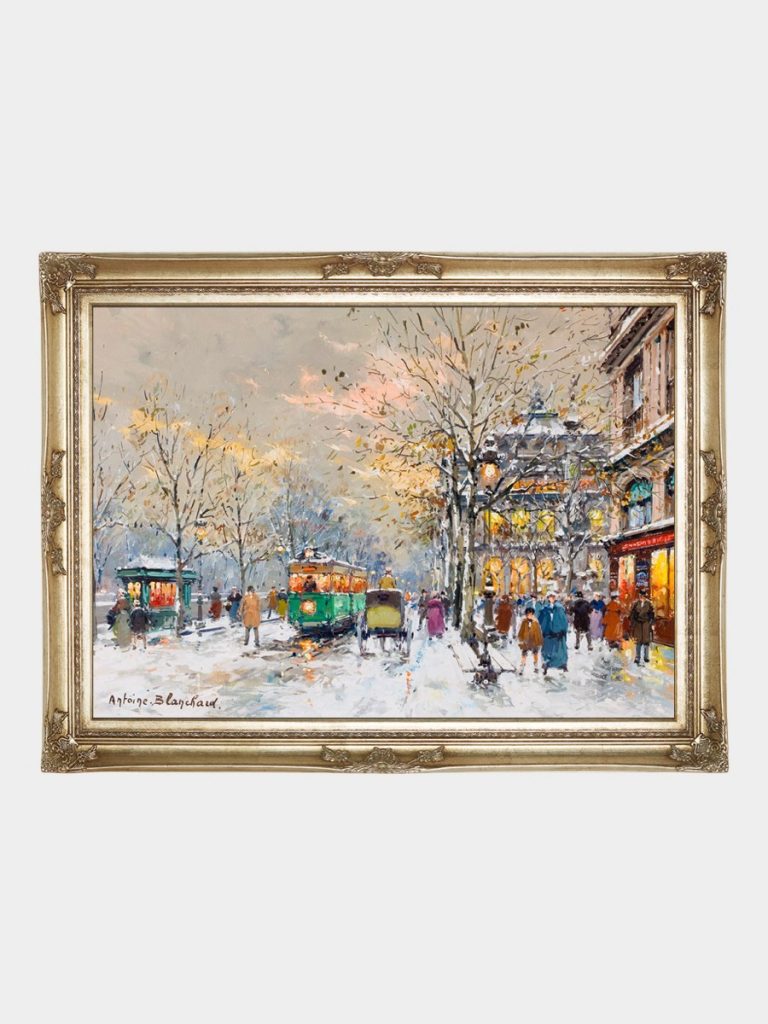Crafting Atmosphere in Bars with Hand-Painted Oil Art: Creative Strategies for Memorable Spaces
Bars thrive on ambiance—a blend of lighting, music, and decor that invites patrons to linger. Hand-painted oil art adds a layer of sophistication and personality, transforming generic walls into storytelling canvases. Below, explore how to leverage these artworks to evoke specific moods, enhance thematic design, and create spaces that feel both intentional and inviting.
1. Setting the Mood with Color and Theme
The choice of subject matter and palette in oil paintings directly influences a bar’s atmosphere. For a cozy, intimate setting, opt for warm, earthy tones like deep reds, burnt oranges, or muted golds. These hues pair well with dim lighting, creating a sense of warmth and seclusion. Themes such as vintage jazz scenes, candlelit cafes, or abstract compositions with swirling textures can further amplify this vibe. In contrast, a lively sports bar might benefit from bold, energetic pieces—think abstract landscapes in vibrant blues and greens or dynamic cityscapes that reflect movement and excitement.
2. Enhancing Architectural Features Through Art Placement
Strategic placement of oil paintings can draw attention to a bar’s unique architectural elements. For example, a tall, narrow painting hung above a doorway or near a staircase can elongate the space and guide patrons’ gaze upward, emphasizing high ceilings. If the bar has exposed brick or wooden beams, choose artworks with rustic frames or textured brushstrokes to complement these materials. In smaller venues, a single large-scale piece can serve as a focal point, while a series of smaller, coordinated paintings along a hallway or behind the bar counter creates visual rhythm without overwhelming the area.
3. Creating Zones Within the Bar: Art as a Divider
Many bars incorporate distinct areas for dining, lounging, or dancing. Oil paintings can help define these zones while maintaining a cohesive design. For a semi-private dining area, hang a collection of framed still-life paintings or portraits to create a sense of enclosure. In a lounge section, abstract art with soft, blended colors can foster relaxation, while vibrant, geometric pieces might energize a dance floor or pool table area. Use lighting to highlight these artworks—spotlights or track lighting can make them pop against darker walls, adding depth to the space.
4. Reflecting Local Culture or Bar Identity Through Art
Hand-painted oil art offers an opportunity to showcase the bar’s unique identity or pay homage to its surroundings. A beachside bar might feature seascapes, marine life, or sunset-inspired abstracts, while a historic downtown venue could display cityscapes or portraits of local legends. For a themed bar—such as a speakeasy or tiki lounge—artworks should align with the narrative. A 1920s-inspired spot might include jazz-era illustrations or Art Deco patterns, while a tropical bar could incorporate lush foliage, exotic birds, or vibrant floral motifs.
5. Balancing Visual Interest with Practicality
While aesthetics are key, functionality shouldn’t be overlooked. In high-traffic areas like near entrances or restrooms, choose durable frames and avoid overly delicate compositions that might be damaged by accidental bumps. If the bar hosts live music or events, consider how lighting changes will affect the artworks—matte finishes absorb light, reducing glare, while glossy surfaces can create reflections. Additionally, ensure paintings are hung at eye level for optimal viewing, adjusting slightly lower for seated areas like booths or bar stools.
By thoughtfully integrating hand-painted oil art, bars can elevate their ambiance from ordinary to extraordinary. Each piece, whether bold or understated, contributes to a narrative that resonates with patrons, encouraging them to return not just for drinks, but for the experience of being in a space that feels alive and intentional.
